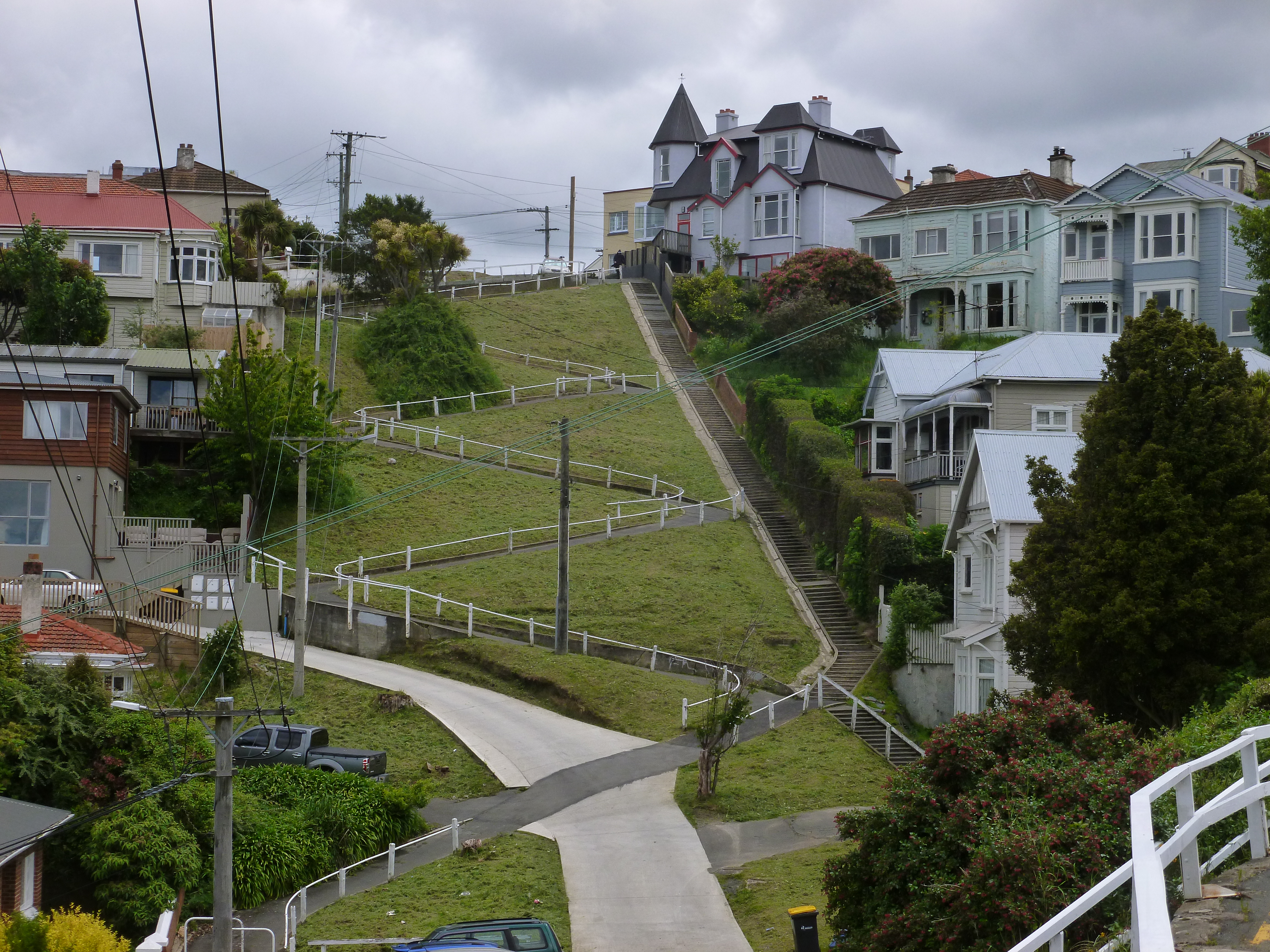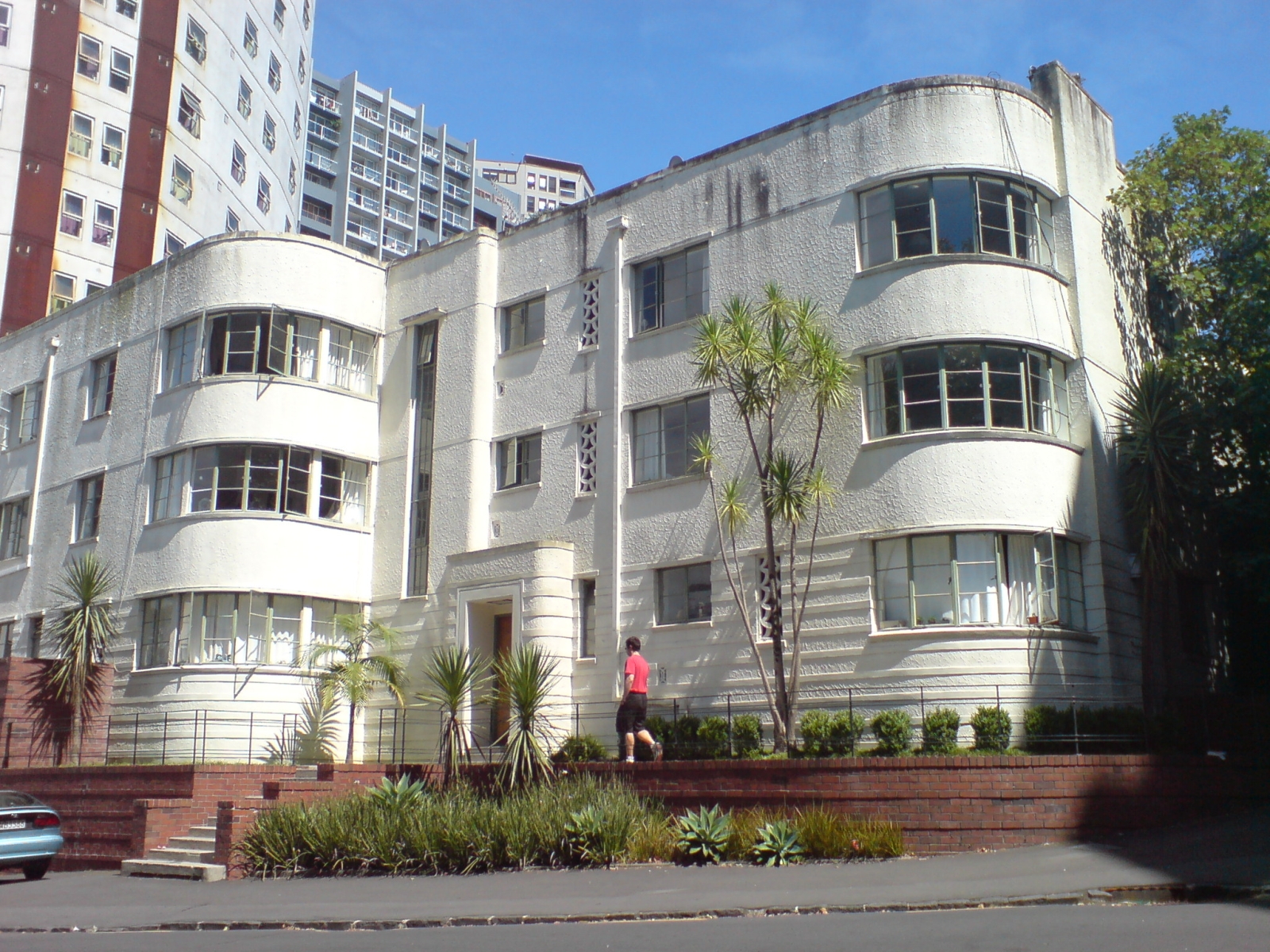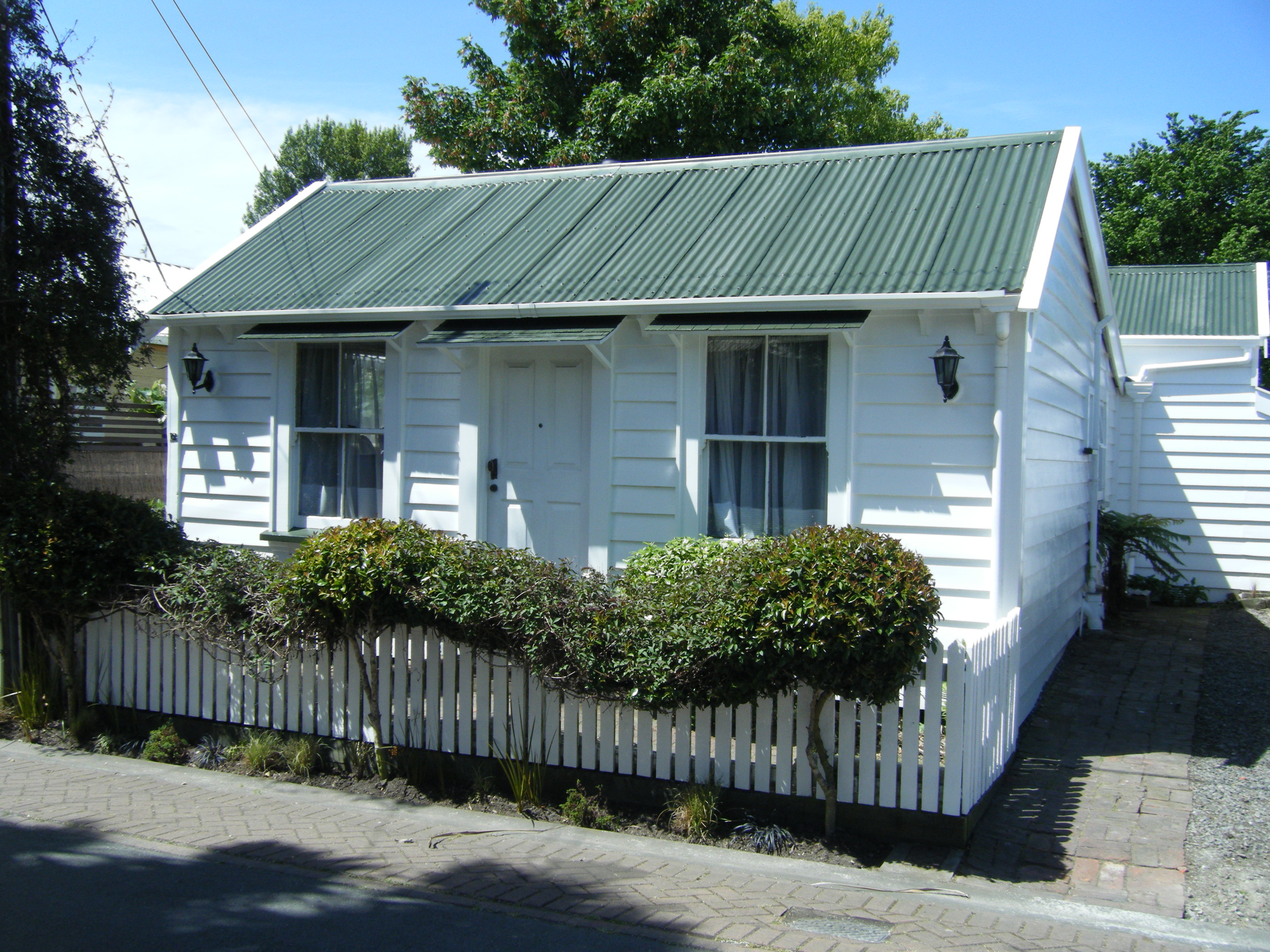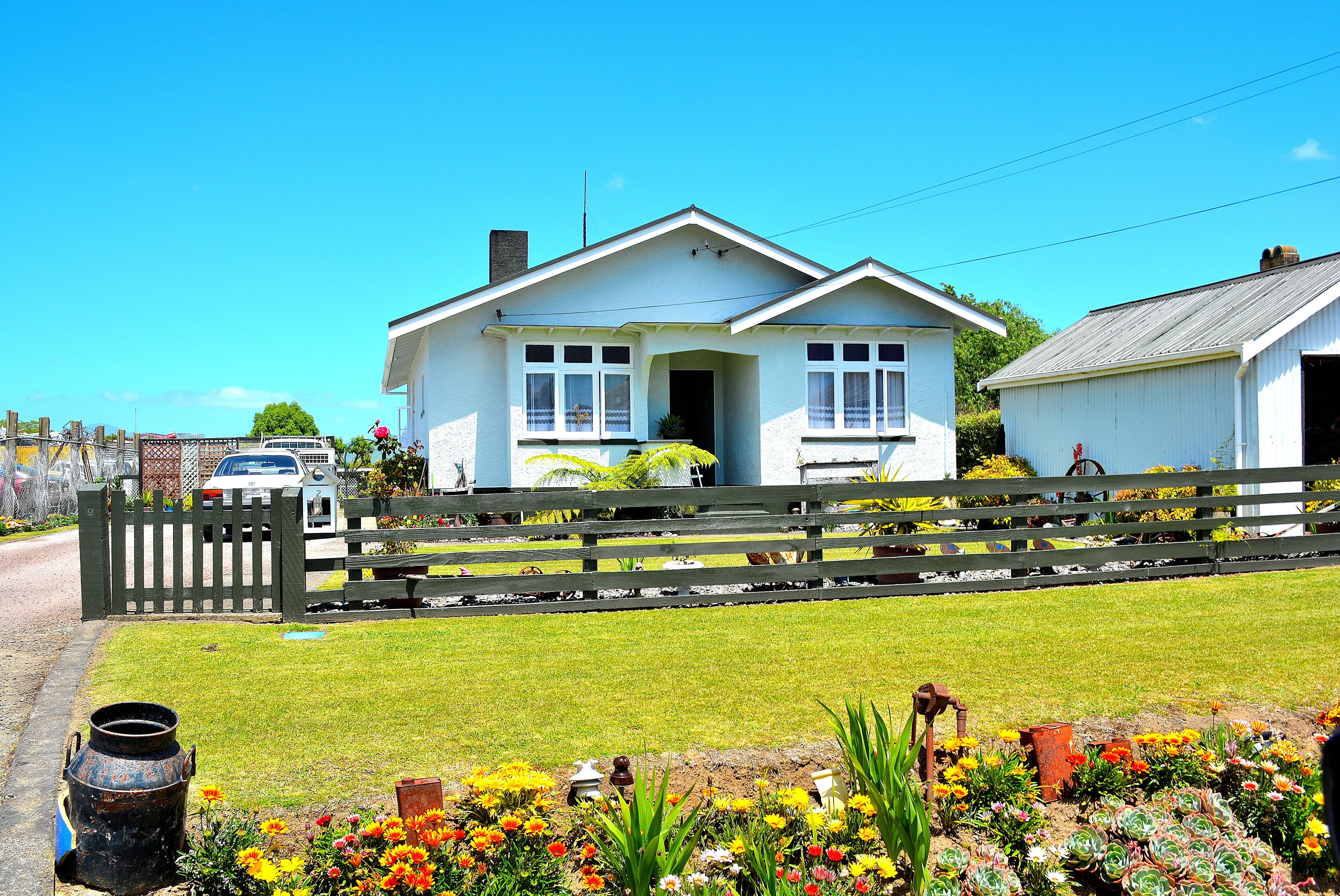Housing in New Zealand on:
[Wikipedia]
[Google]
[Amazon]
 Housing in New Zealand was traditionally based on the quarter-acre block,
Housing in New Zealand was traditionally based on the quarter-acre block,


 Traditionally, residential sections were
Traditionally, residential sections were
 At first Māori used the building methods that had been developed in tropical Polynesia, altered to fit the more nomadic lifestyle. By the 15th century Classic Māori communities slept in rectangular sleeping houses (wharepuni). The wharepuni were made of timber, rushes, tree ferns and bark, they had a thatched roof and earth floors. These building also had a front porch which was an adaptation to New Zealand's climate and is not found in tropical Polynesia. The effect of European housing methods led to a mix of designs with Māori adopting windows and high roofs.
At first Māori used the building methods that had been developed in tropical Polynesia, altered to fit the more nomadic lifestyle. By the 15th century Classic Māori communities slept in rectangular sleeping houses (wharepuni). The wharepuni were made of timber, rushes, tree ferns and bark, they had a thatched roof and earth floors. These building also had a front porch which was an adaptation to New Zealand's climate and is not found in tropical Polynesia. The effect of European housing methods led to a mix of designs with Māori adopting windows and high roofs.

 Houses from this period are divided into cottages and villas. The first houses built in New Zealand were cottages. Villas were the larger and more expensively built equivalent. The typical villa has the kitchen to the rear of the house and separate from the dining room, as food preparation was meant to occur out of sight.
Houses from this period are divided into cottages and villas. The first houses built in New Zealand were cottages. Villas were the larger and more expensively built equivalent. The typical villa has the kitchen to the rear of the house and separate from the dining room, as food preparation was meant to occur out of sight.

 The 20th century started with big Edwardian houses and neo-Georgian architecture From the late 1910s the Californian bungalow became more popular. the design has a lower pitched roof and ceiling height than the typical New Zealand villa and was therefore easier to heat. This coincided with the popularity of the
The 20th century started with big Edwardian houses and neo-Georgian architecture From the late 1910s the Californian bungalow became more popular. the design has a lower pitched roof and ceiling height than the typical New Zealand villa and was therefore easier to heat. This coincided with the popularity of the
 Earthquakes can occur anywhere in New Zealand, but the risk to building structures is highly regional, with the eastern North Island and western South Island having the highest risk. After the
Earthquakes can occur anywhere in New Zealand, but the risk to building structures is highly regional, with the eastern North Island and western South Island having the highest risk. After the
 Housing in New Zealand was traditionally based on the quarter-acre block,
Housing in New Zealand was traditionally based on the quarter-acre block, detached
A stand-alone house (also called a single-detached dwelling, detached residence or detached house) is a free-standing residential building. It is sometimes referred to as a single-family home, as opposed to a multi-family residential dwelli ...
suburban
A suburb (more broadly suburban area) is an area within a metropolitan area, which may include commercial and mixed-use, that is primarily a residential area. A suburb can exist either as part of a larger city/urban area or as a separate ...
home, but many historical exceptions and alternative modern trends exist. New Zealand
New Zealand ( mi, Aotearoa ) is an island country in the southwestern Pacific Ocean. It consists of two main landmasses—the North Island () and the South Island ()—and over 700 smaller islands. It is the sixth-largest island count ...
has largely followed international designs. From the time of organised European colonisation in the mid-19th century there has been a general chronological development in the types of homes built in New Zealand, and examples of each generation are still commonly occupied.
Types of dwellings

 Traditionally, residential sections were
Traditionally, residential sections were quarter acre In Australian and New Zealand English, a quarter acre is a term for a suburban plot of land. Traditionally, Australians and New Zealanders aspired to own a 3- or 4-bedroom house or bungalow on a section of around a quarter of an acre (about 1,000 sq ...
(roughly 1000 sq m), but typical section sizes have been getting much smaller since the middle of the 1900s. After a series of controversies over slum
A slum is a highly populated urban residential area consisting of densely packed housing units of weak build quality and often associated with poverty. The infrastructure in slums is often deteriorated or incomplete, and they are primarily inh ...
-like housing-conditions of the urban poor, from 1936 the then Labour government developed State housing
State housing is a system of public housing in New Zealand, offering low-cost rental housing to residents on low to moderate incomes. Some 69,000 state houses are managed by Kāinga Ora – Homes and Communities, most of which are owned by the ...
– suburban housing built by the government and rented to poorer families. This housing stock was generally very well built and remains a feature in most cities, although now often privately owned. Urban areas, where about 86% of New Zealand residents live,
are becoming more dense, but remain very sparsely settled by international standards.
Many old office-blocks and church-buildings have been converted to apartments in New Zealand's major centres.
Holiday and mobile homes
Small, often very modest holiday homes or beach houses, called a "baches" (pronounced "batches") in most of the country, but "cribs" in the south of the South Island, are used by tourists on a temporary basis as holiday accommodation. These are typically purpose-built houses or huts near a coast or a lake, but can also serve as a base for hunting or fishing in local rivers. They have a reputation for rustic, minimalist and mismatched internal design and furniture. However, large expensive holiday-homes are also (though less commonly) called baches. Tents, camper-vans and caravans are also common, however, New Zealand lacks the largetrailer parks
A trailer park,caravan park, mobile home park, mobile home community or manufactured home community is a temporary or permanent area for mobile homes and travel trailers. Advantages include low cost compared to other housing, and quick and ea ...
of some similar countries, like Australia
Australia, officially the Commonwealth of Australia, is a Sovereign state, sovereign country comprising the mainland of the Australia (continent), Australian continent, the island of Tasmania, and numerous List of islands of Australia, sma ...
and South Africa
South Africa, officially the Republic of South Africa (RSA), is the southernmost country in Africa. It is bounded to the south by of coastline that stretch along the South Atlantic and Indian Oceans; to the north by the neighbouring countri ...
.
A movement to build tiny homes
The tiny-house movement (also known as the small house movement) is an architectural and social movement that advocates for downsizing living spaces, simplifying, and essentially "living with less."Ford, Jasmine, and Lilia Gomz-Lanier. Family a ...
has emerged.
New Zealand also has a large set of wilderness huts, but staying in them for more than three days at a time is discouraged.
Homelessness
Many New Zealanders live permanently in structures which were not designed as homes; the government classifies these people as homeless. Difficulties exist in measuring homelessness statistically, and New Zealand does not typically record the phenomenon with the same accuracy as other statistics. The 2013 census produced an estimate that 1% of people in New Zealand live in "severe housing deprivation" – an increase from previous years. In May 2018 the government allocated $100 million to address homelessness over the following four years.House design
When records began in 1974, new homes in New Zealand had an average floor area of . Average new home sizes rose to peak at in 2010, before falling to in 2019. In 1966 the New Zealand Encyclopedia recognised seven basic designs of New Zealand houses.13th to early-19th century: Adapting a tropical culture to a temperate climate
 At first Māori used the building methods that had been developed in tropical Polynesia, altered to fit the more nomadic lifestyle. By the 15th century Classic Māori communities slept in rectangular sleeping houses (wharepuni). The wharepuni were made of timber, rushes, tree ferns and bark, they had a thatched roof and earth floors. These building also had a front porch which was an adaptation to New Zealand's climate and is not found in tropical Polynesia. The effect of European housing methods led to a mix of designs with Māori adopting windows and high roofs.
At first Māori used the building methods that had been developed in tropical Polynesia, altered to fit the more nomadic lifestyle. By the 15th century Classic Māori communities slept in rectangular sleeping houses (wharepuni). The wharepuni were made of timber, rushes, tree ferns and bark, they had a thatched roof and earth floors. These building also had a front porch which was an adaptation to New Zealand's climate and is not found in tropical Polynesia. The effect of European housing methods led to a mix of designs with Māori adopting windows and high roofs.
19th century: Building a better Britain
 Houses from this period are divided into cottages and villas. The first houses built in New Zealand were cottages. Villas were the larger and more expensively built equivalent. The typical villa has the kitchen to the rear of the house and separate from the dining room, as food preparation was meant to occur out of sight.
Houses from this period are divided into cottages and villas. The first houses built in New Zealand were cottages. Villas were the larger and more expensively built equivalent. The typical villa has the kitchen to the rear of the house and separate from the dining room, as food preparation was meant to occur out of sight.
Early-20th century: American influences and responses

Hollywood
Hollywood usually refers to:
* Hollywood, Los Angeles, a neighborhood in California
* Hollywood, a metonym for the cinema of the United States
Hollywood may also refer to:
Places United States
* Hollywood District (disambiguation)
* Hollywood, ...
film industry, which incorporated American clothes, furniture, cars and houses.
As a response to American influence and nostalgia for Britain a style of houses were built which conspicuously emulated older English styles. Spanish mission style
The Mission Revival style was part of an architectural movement, beginning in the late 19th century, for the revival and reinterpretation of American colonial styles. Mission Revival drew inspiration from the late 18th and early 19th century ...
from the late 1920s with grand triple arches and twisted Baroque columns. Modernism
Modernism is both a philosophy, philosophical and arts movement that arose from broad transformations in Western world, Western society during the late 19th and early 20th centuries. The movement reflected a desire for the creation of new fo ...
(Art deco
Art Deco, short for the French ''Arts Décoratifs'', and sometimes just called Deco, is a style of visual arts, architecture, and product design, that first appeared in France in the 1910s (just before World War I), and flourished in the Unite ...
) of the 1930 was designed to be functional with smooth surfaces and a flat roof.
The 1931 Hawke's Bay earthquake
Events
January
* January 2 – South Dakota native Ernest Lawrence invents the cyclotron, used to accelerate particles to study nuclear physics.
* January 4 – German pilot Elly Beinhorn begins her flight to Africa.
* January 22 – Si ...
showed an absence or low-level of earthquake resilience in buildings. Subsequently, earthquake standards for buildings were introduced in 1935.
Late-20th century: Neo-colonial and Mediterranean styles
State housing
State housing is a system of public housing in New Zealand, offering low-cost rental housing to residents on low to moderate incomes. Some 69,000 state houses are managed by Kāinga Ora – Homes and Communities, most of which are owned by the ...
had a big influence on the way homes were built in New Zealand from the 1940s to the late 1960s.
The 1970s saw several changes to housing construction. New Zealand's metrication
Metrication or metrification is the act or process of converting to the metric system of measurement. All over the world, countries have transitioned from local and traditional units of measurement to the metric system. This process began in F ...
between 1969 and 1976 saw construction move from imperial to metric units. Imperial units still remain in colloquial use; for example, dimensional timber is still referred to as 'four-by-two'. In 1978, two key building standards were introduced: NZS 3604
NZS 3604 ''Timber-framed buildings'' is a New Zealand technical standard which sets out specifications and methods for designing and constructing light timber-framed houses and other low-rise buildings. When read together with the amendments in B ...
, specifying design and construction requirements for light timber-framed buildings, and NZS 4218, specifying minimum thermal insulation
Thermal insulation is the reduction of heat transfer (i.e., the transfer of thermal energy between objects of differing temperature) between objects in thermal contact or in range of radiative influence. Thermal insulation can be achieved with s ...
requirements for houses.
21st century building habits
In the early 21st Century New Zealanders built in variety of styles that borrowed from a variety of previous influences.Integration with the environment
In some conspicuous locations in area of natural beauty it is required by local councils to blend the house design with the surrounding environment.Passive climate control
Houses can be built to maximise the heat gained during the day from the sun and retain it overnight.Natural building material revival
With increased affluence and environmental concerns a small but growing number of houses are built with semi processed natural materials and traditional building methods.Utilities
Heating and insulation
Insulation
Insulation may refer to:
Thermal
* Thermal insulation, use of materials to reduce rates of heat transfer
** List of insulation materials
** Building insulation, thermal insulation added to buildings for comfort and energy efficiency
*** Insulated ...
in ceilings, walls and floor became mandatory for new builds and additions in 1978. Glass fibre, polyester, polystyrene, wool and paper are all used for insulation in New Zealand. Home insulation in New Zealand can be heavily subsidised by the government.
According to the 2018 New Zealand census
Eighteen or 18 may refer to:
* 18 (number), the natural number following 17 and preceding 19
* one of the years 18 BC, AD 18, 1918, 2018
Film, television and entertainment
* ''18'' (film), a 1993 Taiwanese experimental film based on the sho ...
, heat pump
A heat pump is a device that can heat a building (or part of a building) by transferring thermal energy from the outside using a refrigeration cycle. Many heat pumps can also operate in the opposite direction, cooling the building by removing h ...
s were the most common form of space heating, with 47.3% of households using them as their primary heating appliance. Other common forms of space heating were electric resistance heaters (44.1%) and wood burners (32.3%).
Some local councils are restricting the kind of wood and coal burners that can be used in order to improve air quality.
Water and sewerage
In 2017 about 80% of New Zealanders were reliant on water purification distribution systems that supplied more than 100 people. Of these 96% met the bacteriological standards for water quality, while 81% met all the relevant standards. The remaining 20% of New Zealanders typically live in rural areas where rain, streams and bores are commonly used as water sources. Large properties can process or store their sewage on site. Grey water can be reused for purposes other than drinking. This recycling is required by some New Zealand councils.Construction and regulations
The Building Act 1991 was replaced by the Building Act 2004, this introduced a licensing for building designers, builders and related trades. Councils were required to be subject to regular quality control procedure checks, however, council building inspectors remained unlicensed. TheBuilding Code
A building code (also building control or building regulations) is a set of rules that specify the standards for constructed objects such as buildings and non-building structures. Buildings must conform to the code to obtain planning permission ...
sets out the minimum performance standards that buildings must designed and constructed to meet, but itself does not prescribe methods or solutions to meet the Code. Acceptable solutions and verification methods specify construction and testing methods that assure compliance with the Code. For example, constructing buildings to NZS 3604
NZS 3604 ''Timber-framed buildings'' is a New Zealand technical standard which sets out specifications and methods for designing and constructing light timber-framed houses and other low-rise buildings. When read together with the amendments in B ...
''Timber-framed buildings'' or NZS 4229 ''Concrete masonry buildings not requiring specific engineering design'' is an acceptable solution to comply with structural provisions of the Code.
Alteration regulations
Most alterations to homes need to be certificated, there are also limits on houses of historical importance.Illegal building practices
While all building practices that do not comply with the Building Act are illegal, some are also specifically banned.Foundations
Three broad categories are available for suburban house foundations concrete slab, a concrete block basement foundations and an elevated floor with a crawl space. Footing depth varies with soil type and slope, with either a floating polystyrene slab or more rarelypiling
A deep foundation is a type of foundation that transfers building loads to the earth farther down from the surface than a shallow foundation does to a subsurface layer or a range of depths. A pile or piling is a vertical structural element ...
.
Climate and environmental standards
Standards are set out in NZS 3604 ''Timber-framed buildings'' and NZS 4218 ''Thermal insulation - Housing and small buildings'' regarding a building's resistance to wind, earthquake, snow, corrosion, and climate. The following table shows the respective earthquake, snow and climate zones for cities and selected large towns:Earthquake risk and construction
 Earthquakes can occur anywhere in New Zealand, but the risk to building structures is highly regional, with the eastern North Island and western South Island having the highest risk. After the
Earthquakes can occur anywhere in New Zealand, but the risk to building structures is highly regional, with the eastern North Island and western South Island having the highest risk. After the 2011 Christchurch earthquake
A major earthquake occurred in Christchurch on Tuesday 22 February 2011 at 12:51 p.m. local time (23:51 UTC, 21 February). The () earthquake struck the entire of the Canterbury region in the South Island, centred south-east ...
a major review changed the boundaries and construction rules.
Under NZS 3604 and NZS 4229, New Zealand is divided into four earthquake zones, with zone 1 has the lowest earthquake risk while zone 4 having the highest risk. Buildings in zones 2, 3 and 4 have to withstand 1.6 times, twice, and three times the force of zone 1 buildings respectively.
Housing affordability
Ownership
In 2017 63% of New Zealanders lived in an owner occupied home, this includes those who have an outstandingmortgage
A mortgage loan or simply mortgage (), in civil law jurisdicions known also as a hypothec loan, is a loan used either by purchasers of real property to raise funds to buy real estate, or by existing property owners to raise funds for any pu ...
on their property and 33% live in rental properties. This is the lowest rate of home ownership since 1951. This is partly due to the increase in New Zealand house prices which since 1990 have increased faster than any other OECD
The Organisation for Economic Co-operation and Development (OECD; french: Organisation de coopération et de développement économiques, ''OCDE'') is an intergovernmental organisation with 38 member countries, founded in 1961 to stimulate e ...
country.
Housing in New Zealand has been classified as 'severely unaffordable' with a score of 6.5 under the median measure housing affordability measure. Affordability varies depending on location, with major urban centres such as Auckland
Auckland (pronounced ) ( mi, Tāmaki Makaurau) is a large metropolitan city in the North Island of New Zealand. The List of New Zealand urban areas by population, most populous urban area in the country and the List of cities in Oceania by po ...
and Wellington
Wellington ( mi, Te Whanganui-a-Tara or ) is the capital city of New Zealand. It is located at the south-western tip of the North Island, between Cook Strait and the Remutaka Range. Wellington is the second-largest city in New Zealand by me ...
more unaffordable than smaller cities and rural areas.
Renting
In mid August 2022, theHuman Rights Commission
A human rights commission, also known as a human relations commission, is a body set up to investigate, promote or protect human rights.
The term may refer to international, national or subnational bodies set up for this purpose, such as nationa ...
advocated an immediate freeze on rent increases and increasing the accommodation supplement to provide renters with relief in response to the recent cost of living crisis. The Commission had earlier released its ''People's Inquiry into Student Wellbeing'' in July 2022 which found that two thirds of tertiary students were unable to cover basic living costs including food, rent and healthcare.
Government housing initiatives
See also
*Housing in China
In recent years, housing development has ballooned in China as its economy has developed. Since 1978, the government has promoted the commercialization of housing in urban areas. Property development has become big business in China, with new ci ...
*Housing in Japan
Housing in Japan includes modern and traditional styles. Two patterns of residences are predominant in contemporary Japan: the single-family detached house and the multiple-unit building, either owned by an individual or corporation and re ...
*Housing New Zealand
Housing, or more generally, living spaces, refers to the construction and assigned usage of houses or buildings individually or collectively, for the purpose of shelter. Housing ensures that members of society have a place to live, whether ...
*New Zealand design
New Zealand design is a product both of indigenous Māori culture and of European ( pakeha) traditions and practices. The concept of design applies to Māori kaupapa (fundamental principles) as well as to other cultural spheres.
Māori design ...
References
{{reflist